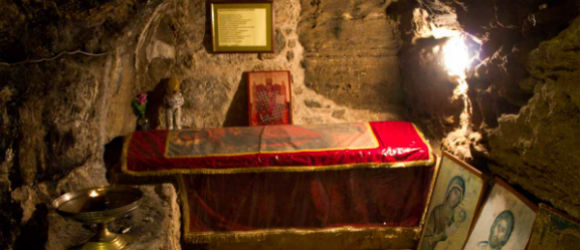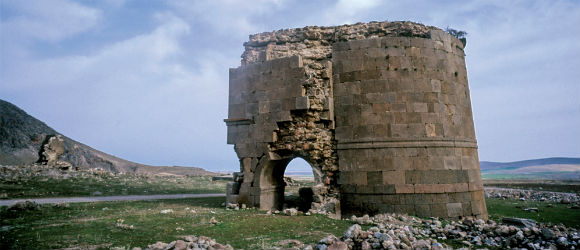VN:F [1.9.22_1171]
Rating: 5.0/5 (9883 votes cast)
Introducing Turkey
Turkey with huge swath of land situated between two continents, Asia and Europe, has one of the world’s best cities and is famous for its unique and magnificent scenery from white-sand beaches to soaring mountains.
Its history has encompassed several thousands years of human evolution and civilization. The accomplishments and influences of people who had resided in the land can be seen all over the country such as the ruins on Meditterarean beaches left by the mysterious Lycians, whirling dervishes gyrated with Sufi mysticism, Ani’s churches on the Anatolian steppe built medieval Armenians, and the Curetes Way at Ephesus. Byzantine Christians cut cave churches into Cappadocia’s fairy chimneys and hid in underground cities from Islamic armies. During Ottoman Empire, the Sultans luxuriated in İstanbul Topkapı Palace surrounded by fawning courtiers, harem members, eunuchs and the riches from an empire stretching from Budapest to Baghdad.
Hence, Turkish culture is the mixture of the East and the West and yet posseses its own characters.
Landscapes & Activities
The most surprising impression that every first-time visitor has about Turkey , other than its stereotypes of kebaps, carpets and moustachioed hustlers in the bazaars, is the vast diversities found between the west coast and the east regions. Evening entertainments such as night clubs as well as cruising through markets are common in westernized metroplises such Istanbul and Izmir. In Cappadocia and the southwestern coasts outdoor sports and water sports are enjoyable and most popular, just as is the meze-savouring fun time on a panoramic terrace. Then there are the less-frequented eastern quarters, where honey-coloured outposts overlook the plains of ancient Mesopotamia, and weather-beaten relics add lashings of lyricism to mountain ranges. It’s hardly surprising Turkey has attracted so many folk over the centuries. Come and discover their legacy for yourself.
VN:F [1.9.22_1171]
Rating: +9921 (from 9921 votes)
The ruins of the city of Pessinus are about 15 kilometers south of the town of Sivrihisar and on the left bank of the Sangarius (Sakarya) River. What is left includes a theater and the foundations of the famous temple to Cybele. Pieces of the marble wall […]
Read more →
Timothy was the first first-century Christian bishop of Ephesus, whom tradition relates died around the year AD 97. The New Testament indicates that Timothy traveled with Saint Paul, who was also his mentor. He is addressed as the recipient of the Epistles to Timothy. Saint Timothy is […]
Read more →
Barnabas, born Joseph, was an early Christian, one of the earliest Christian disciples in Jerusalem. According to Acts 4:36 Barnabas was a Cypriot Jew. Named an apostle in Acts 14:14, he and Paul the Apostle undertook missionary journeys together and defended Gentile converts against the Judaizers. They […]
Read more →
İznik, historically known as Nicea , is a town and an administrative district in the Province of Bursa, Turkey. The town lies in a fertile basin at the eastern end of Lake İznik, bounded by ranges of hills to the north and south. As the crow flies […]
Read more →
Hattusa Boğazkale, Yazılı Kaya, and Alaca Höyük are archeological sites east of Ankara and north of Yozgat. Boğazkale, the double walled city above the present village of Boğazköy, was known as Hattusas and was the capital of the Hittite Old Kingdom around 1700 B.C. The Hittites were […]
Read more →
The present capital of Turkey, Ankara, was founded by Phrygians in the eighth century B.C. Among the interesting places to see there is what is left of the Temple of Augustus. This was reconstructed from an earlier temple as thanks to Augustus tor the city’s semi-independence. On […]
Read more →
Carchemish lies a few kilometers south of Birecik on the Euphrates River. Near the village of Barak on the west bank of the river can be found the few ruins of what was once the capital of one of the most powerful of the Hittite kingdoms. The […]
Read more →
Paul and Barnabas went from Lystra to Derbe after Paul the Apostle had recovered from being stoned. An altar stoııe has been found in Kerti Höyük with an inscription that has the names of Derbe and Bishop Michael carved on it. Without other evidence of the city it […]
Read more →
Adramyttium was founded in the fourth century B.C. by Lydian kings as one of their points of defense. Behind the town rise the slopes of Kaz Dağı, the Mt. Ida, “many-fountained Ida” of Tennyson’s “Oenone” where Paris gave up his pastoral life for a romance with Helen. […]
Read more →
It is appropriate to begin the description of the biblical sites of the New Testament with Antioch, the most southern of those in Turkey, because this is where the followers of Jesus were first called Christians. After the stoning of Stephen for blasphemy in Jerusalem in about […]
Read more →










